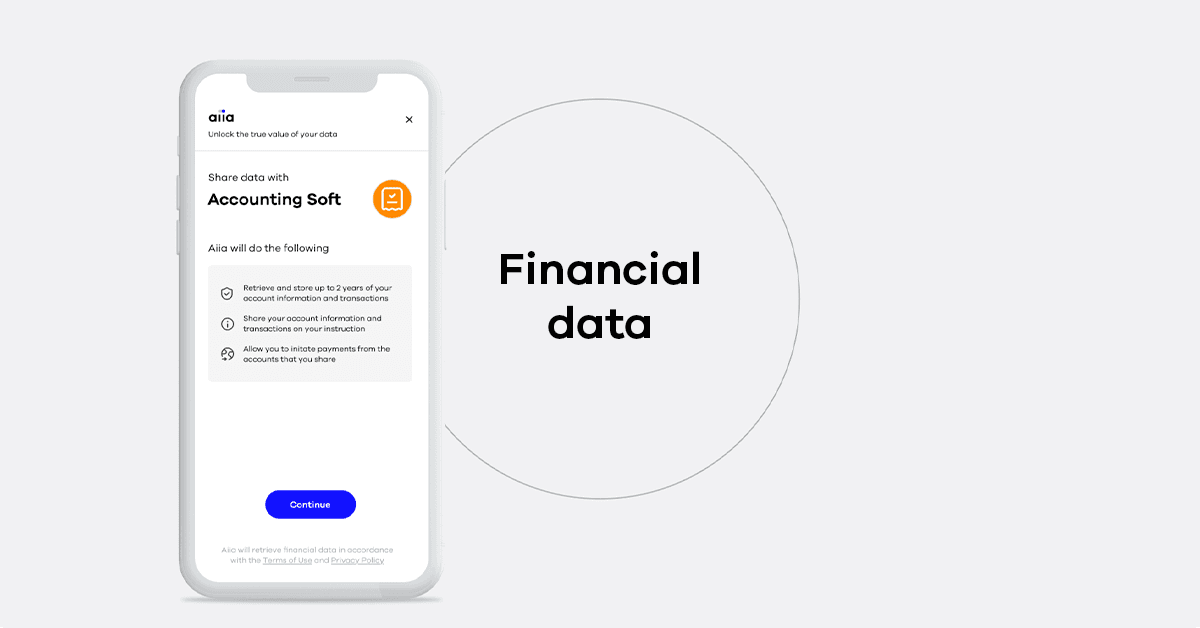
Account aggregation: What’s all the fuss about?
August 14, 2020 | Rune Kallehauge
AIS, PIS, account aggregation, payment initiation, open banking, open finance, third party provider.
The list of words is long and can be heavy to some. We get it. That’s why we’ve created a new article series highlighting some of the key buzzwords that you should know of in the new world of finance.
In this article, we take a look into one of the commonly used terms - account aggregation - delivered to you in layman’s terms. We’ll discuss how account aggregation can help people and businesses benefit from increased transparency.
We’ll also shed light on how it’s already fostering innovation in the new world of finance, where access to account information has been democratised to boost competition and level the playing field across markets.
Account aggregation: What is it?
There’s no doubt about it: The future of financial services is personalised, data-driven and insightful. Put simply, account aggregation is about collecting someone’s financial data from a bunch of different bank accounts, so it can be displayed in one place. This helps give the consumer or business a complete overview of their finances without having to jump back and forth between different services or different apps to achieve an end goal. With that in mind, you’ll be able to build convenience into all sorts of services, ranging from banking to accounting systems, and remove hassle from time-consuming tasks, such as bank reconciliation.
But what’s it good for? And why should you care?
Gathering all of your customers’ financial information in one place can help them manage their money quickly and more efficiently. An example of this could be letting your customers know exactly how much money is in their accounts across different banks simply by using your application or service. The ease of use brings us to the importance of why you should care as a business and the opportunities that lie in owning the direct customer interface relationship.
Let’s look at a simple example: Customer A is banking with three different providers: having a bank account for his salary at Bank X, a travel-card with low or maybe no fees across other countries from Bank Y and a mortgage with Bank Z. None of the banks use account aggregation and therefore it’s nearly impossible to stay in touch with all the financials (unless the customer has a really good memory). By implementing account aggregation and letting Customer A benefit from the power of automated data, you’ll be able to deliver the go-to app or service where Customer A can get a full financial overview and understanding in a split second.

So where do you think Customer A will go to handle his or her finances? Probably the place where he or she is in charge of everything related to their money and saves time, right?
In short: Account aggregation can benefit your business with the ability of becoming the preferred service and, in doing so, gain added customer loyalty, no matter how many banks the customer might have.
On to the next: benefiting businesses with automated data access. In the same way as from the consumer perspective, using services that offer account aggregation is a simple way to remove hassle and free up time to let business owners focus on the core business and not necessarily having to worry too much about the financials.
Granting your business clients account aggregation is a simple way to let them understand the full picture of their company's financial health or maybe even let them skip some of (the boring) manual tasks of doing bank reconciliation.
Accounting system providers are a perfect example of how you can use account aggregation in a business client context to deliver a stellar experience. For instance, leaving manual bookkeeping in the past and letting them skip an ongoing and time-consuming task.
By using account aggregation to connect to your customers’ bank transactions, you can effortlessly build a solution that automatically asks for a receipt when a transaction appears on the bank account. Smart? We certainly believe so. And your existing or future customers will most likely too.

So who’s already leveraging account aggregation opportunities?
Since the implementation of PSD2 over the last couple of years, account aggregation has become a cornerstone in finance management. Whether you’re a financial institution, a personal finance management app, an accounting system provider or a lender, easy access to a single view of your customers’ financial situation is rapidly growing to become a must-have offering.
Below are three front-running use cases highlighting some of the services that have already been built to improve the customer experience with account aggregation.
Dinero: Letting the customers fly on autopilot with bookkeeping of the future
Spiir: Putting ‘Personal’ into Finance Management
Danske Bank: Building the ultimate banking experience with a full financial overview
Want to get the full picture of your customers’ finances, empower your financial super app or build a next-level service with financial data that the market’s been craving?
Get started in our free Sandbox today or get in touch to learn more.




